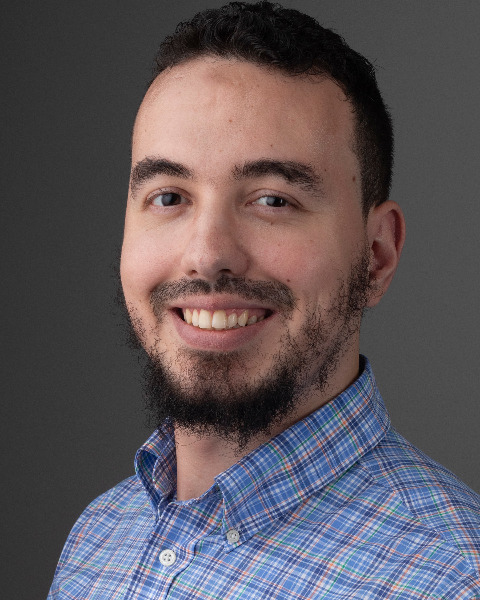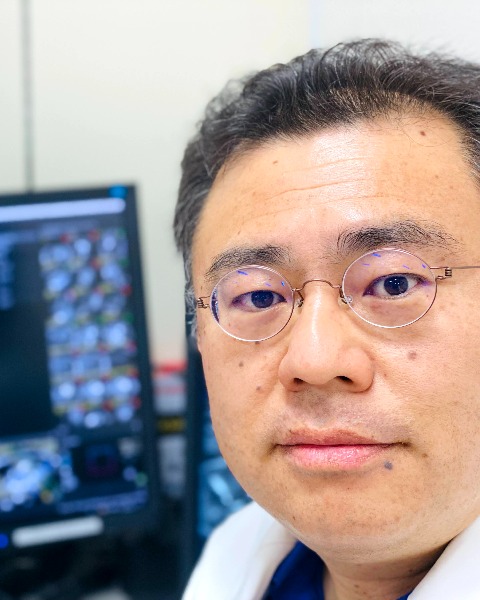Rapid Fire Abstracts
Hierarchical Consensus Clustering of CMR Radiomics Reveals Important Histopathological Differences in Nonischemic Dilated Cardiomyopathy (RF_FR_351)

Amine Amyar, PhD
Instructor in medicine
Harvard Medical School - Beth Israel Deaconess Medical Center
Amine Amyar, PhD
Instructor in medicine
Harvard Medical School - Beth Israel Deaconess Medical Center- SN
Shiro Nakamori, MD, PhD
Visiting Scientist
Beth Israel Deaconess Medical Center - LN
Long H. Ngo, PhD
Associate Professor
Harvard Medical School 
Masaki Ishida, MD, PhD
Associate Professor
Mie University Hospital, Japan- SN
Satoshi Nakamura, MD, PhD
Associate Professor
Mie University Hospital, Japan - TO
Taku Omori, MD, PhD
Doctor
Mie University Hospital, Japan - KM
Keishi Moriwaki, MD
Doctor
Mie University Hospital, Japan - NF
Naoki Fujimoto, MD
Doctor
Mie University Hospital, Japan - KI
Kyoko Imanaka-Yoshida, MD
Doctor
Mie University Hospital, Japan 
Hajime Sakuma, MD
Professor and Chariman
Mie University, Japan- KD
Kaoru Dohi, MD, PhD
Professor
Mie University Hospital, Japan - WM
Warren J. Manning, MD
Section Chief, Non-invasive Cardiac Imaging
Beth Israel Deaconess Medical Center/Harvard Medical School
Beth Israel Deaconess - RN
Reza Nezafat, PhD
Professor
Harvard Medical School
Presenting Author(s)
Primary Author(s)
Co-Author(s)
Methods: We retrospectively identified 132 DCM patients (54±15 years; 71% male) who underwent 3T CMR (Ingenia, Philips, Netherlands) within 6 [2-5] days prior to their scheduled EMB. The CMR imaging protocol included native and post-contrast T1 for extracellular volume (ECV) mapping, and late gadolinium enhancement (LGE). Radiomic first-order and textural features were computed for each sequence from the mid-septal myocardium near the biopsy region (1023 features). Hierarchical consensus clustering, an unsupervised data-driven approach, was then applied to identify distinct patient clusters by identifying the optimal number of clusters without relying on specific ground truths or outcomes. These clusters were then compared based on the histological features of the septal biopsy samples. An unpaired t-test was used for comparisons between two clusters, while a one-way ANOVA with Bonferroni adjustment for multiple comparisons was used when there were more than two clusters.
Results:
Four clusters of patients were identified using native T1 radiomic features. Cluster 1 was characterized by a lower collagen volume fraction (CVF) of 10.9% and a lower prevalence of LGE (43%) with inflammation present in 14% of patients. Cluster 2 showed a higher prevalence of inflammation (27%, p=0.03), increased extracellular space (30.6%, p=0.009), and a greater presence of LGE (66%, p=< 0.001). Cluster 3 had a lower prevalence of LGE (41%) without ongoing inflammation, while Cluster 4 had a higher prevalence of replacement fibrosis (30%, p=0.014) and trend for a higher left ventricular mass (p=0.072). Notably, there were no significant differences in native T1 among the clusters (p=0.545). ECV radiomics identified two clusters with distinct underlying histological profiles: Cluster 1 was characterized by a severe myocardial fibrosis (20%, p=0.013), myocyte hypertrophy (cell diameter standard deviation: 3.7±1.7, p=0.006), and inflammation (16%, p=0.067), while Cluster 2 demonstrated less fibrosis (CVF of 10.5%, p=0.045) and reduced inflammation (2%). LGE radiomics also showed potential for phenotyping: Cluster 1 showed inflammation (25%, p=0.081) along with vacuolization (25%, p=0.098); Cluster 2 consisted of patients with minimal CVF (11%, p=0.137); Cluster 3 had low CVF (12%) but immune cell infiltrates (10%); and Cluster 4 demonstrated severe myocardial fibrosis (42%, p=0.001).
Conclusion: Hierarchical consensus clustering of radiomic features extracted from mid septal native T1, ECV, and LGE revealed important histopathological differences in DCM, potentially enabling more precise non-invasive phenotyping.

